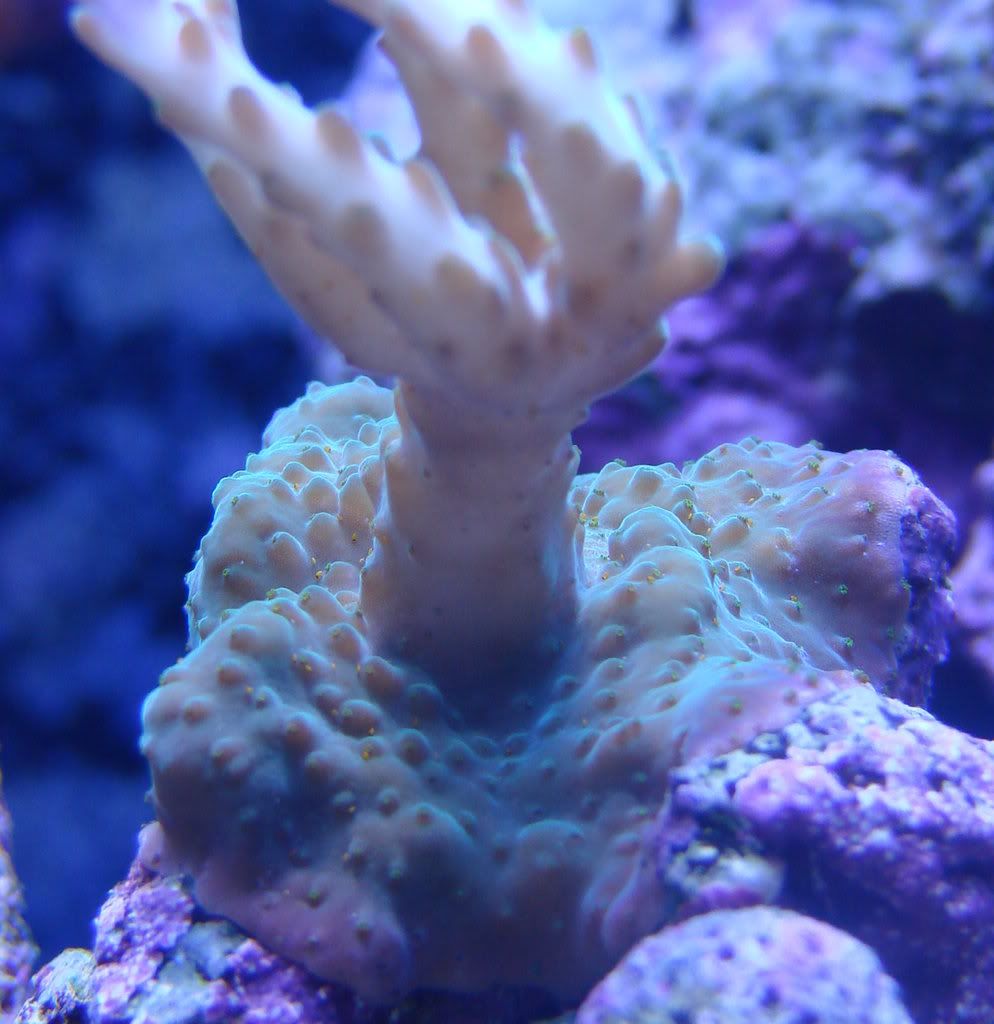Acropora red bugs
Identification: Acropora Red BugOne of the most recent "pests" who have now become prevalent is a very small crustacean that looks like a mite and appears to prefer most species of Acropora corals. This crustacean is yellow in color with a red dot, approximately 1/2 mm in length, and is very difficult to see without a magnifying glass. It has been theorized that red bugs are either a parasitic form of copepod or micro-amphipod, though very little research has been done and their true identification is not complete at this time.
Symptoms and signs: Red Bugs on Acropora CoralIt has been speculated that the crustacean feeds off of the slime and waste products produced by the Acroporas. If you have an established colony of Acropora sp. that begins losing coloration and stops showing normal polyp extension, take a closer look at the tissue of the coral for any small yellowish/red specks. It is oftentimes easiest to distinguish these pests on the shadowed underside of a branch. An infected colony of Acropora will typically show poor or no polyp extension, and will slowly lose coloration over time. As a result of this infestation, it has been found that the growth rate of the colony is seriously affected, and may even result in death to the coral itself.
It is not clear why these bugs prefer certain species of Acropora over others, nor is it clear why they are not found on other SPS corals such as Montipora, Pocillopora, or Seriatopora.
Treatment: Several methods of treatment - from introducing natural predators to medications - have been tested with various levels of success.
*
Dragonface PipefishIntroduce Dragonface Pipefish (Corythoichthys haematopterus) to the quarantine or display aquarium. Once the fish are settled in and adjusted to the aquarium conditions, the small pipefish will anchor themselves on the branches of Acropora and begin to feed on tiny crustaceans as well as red bugs.
*
Reef DipDip the Acropora into a concentrated iodine and aquarium water mixture for approximately 15 minutes using a clean plastic container. Lugol's solution is the preferred iodine base for this procedure, along with other commercially available coral dips, such as Reef Dip by Seachem.
*
Interceptor, a prescription drug, is available through our PharmacyThe last method, developed by Dustin Dorton at ORA, involves treating the aquarium or quarantine aquarium with Milbemycin oxime. This chemical is the active ingredient in Interceptor, a heartworm preventive and de-worming medication for dogs only available by prescription from a veterinarian. This medication has been found to directly attack crustaceans, and is the most invasive and risky treatment mentioned thus far because it does not discriminate between pests and other inhabitants like shrimp, amphipods, copepods, and crabs. Since this treatment may cause all crustaceans in your system to perish, it is important to either remove and treat the infected colonies in a separate aquarium, or to remove the crustaceans that you wish to save to a different holding aquarium. Exact guidelines for the dosages and treatment regime are still in the testing phase, yielding positive results, but the long-term ramifications of this new treatment are still not known.













